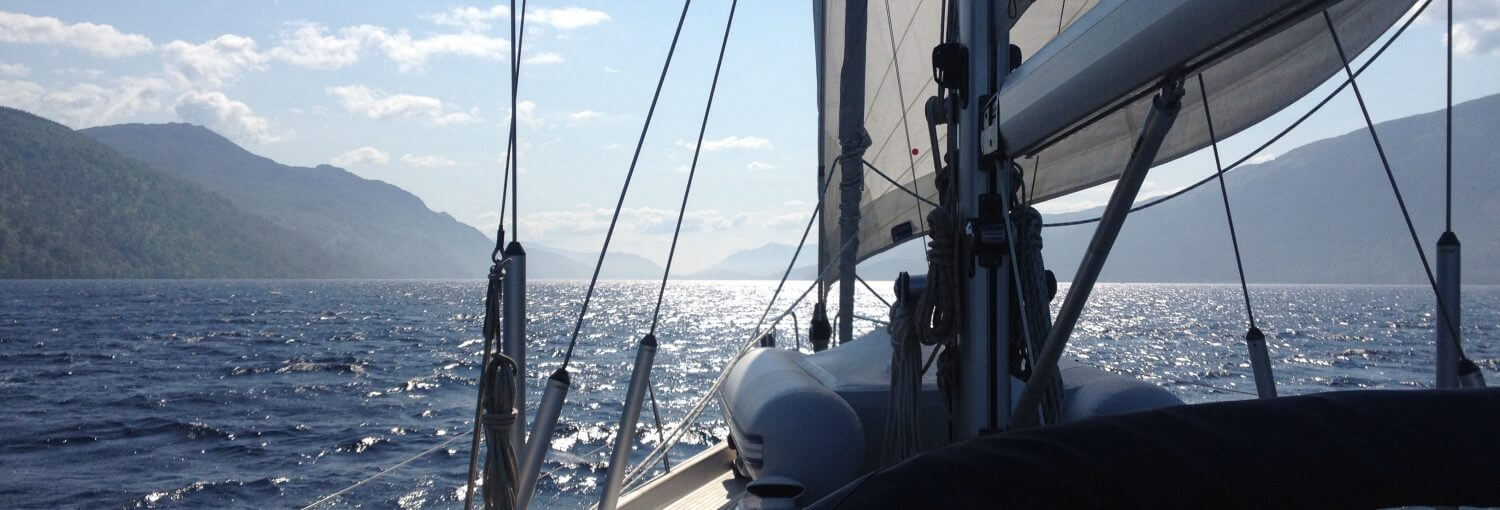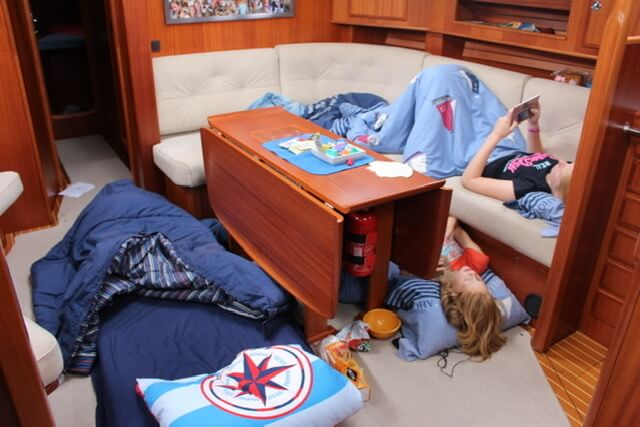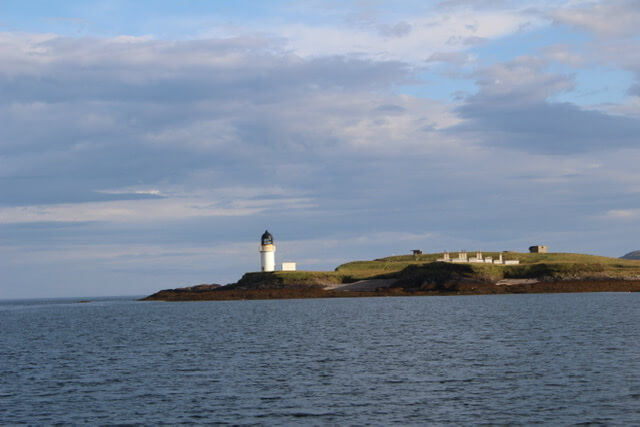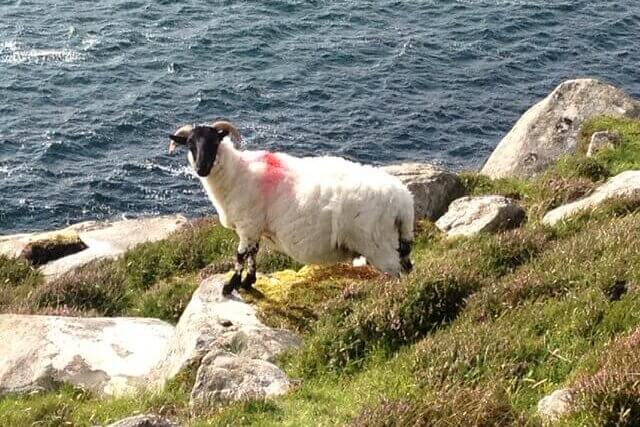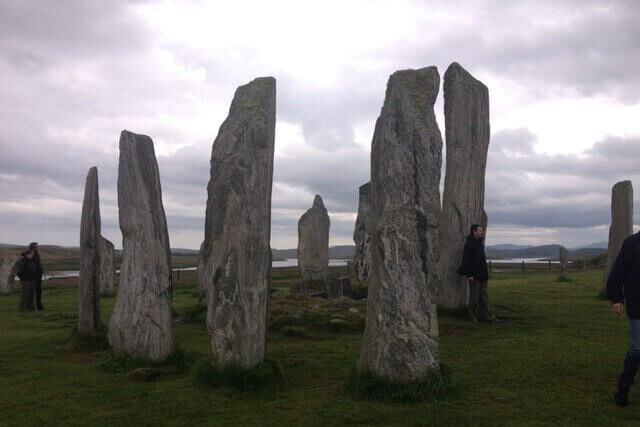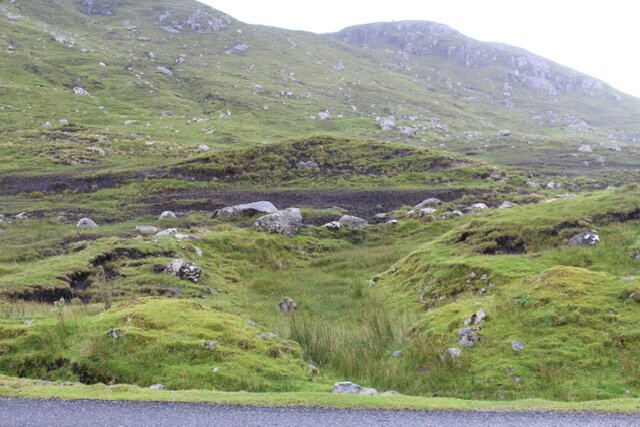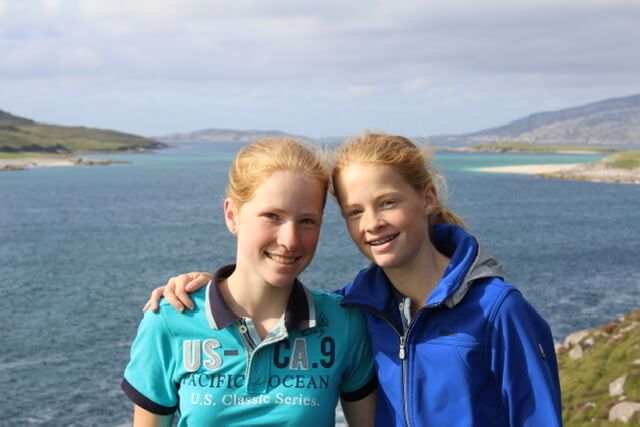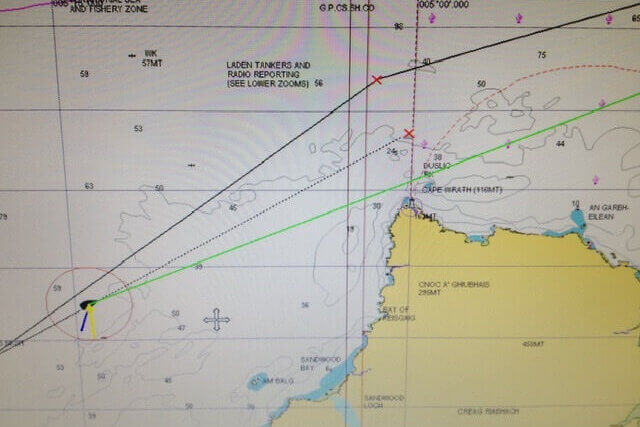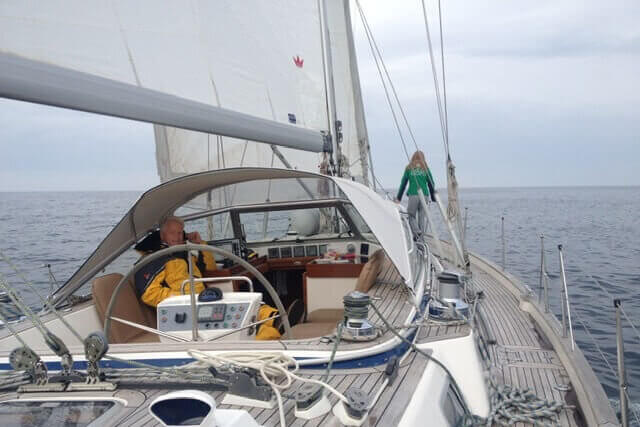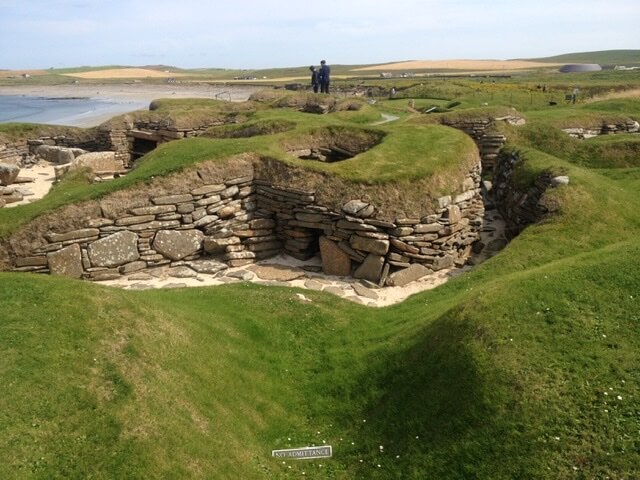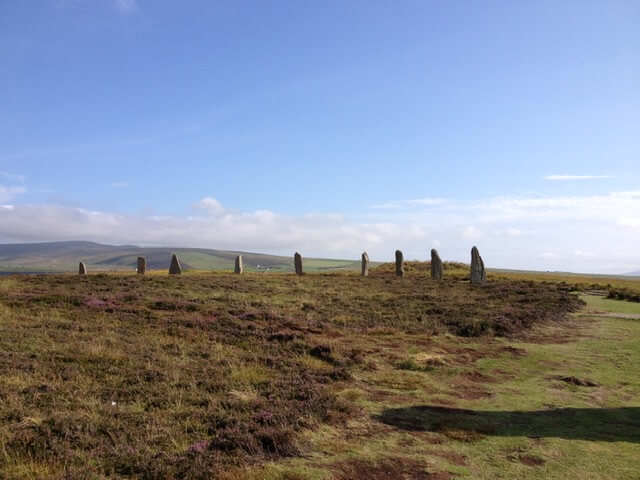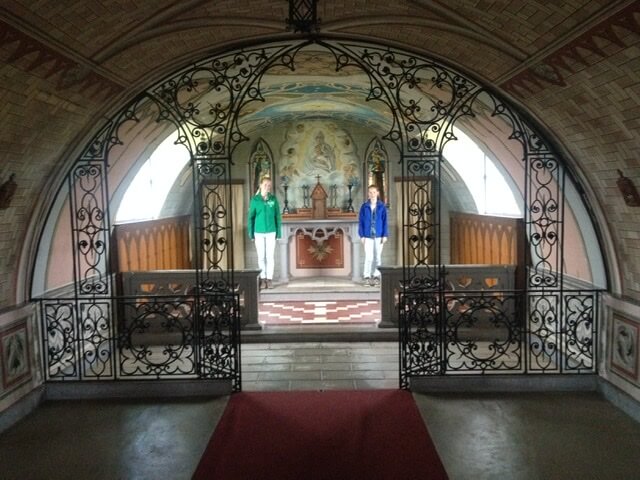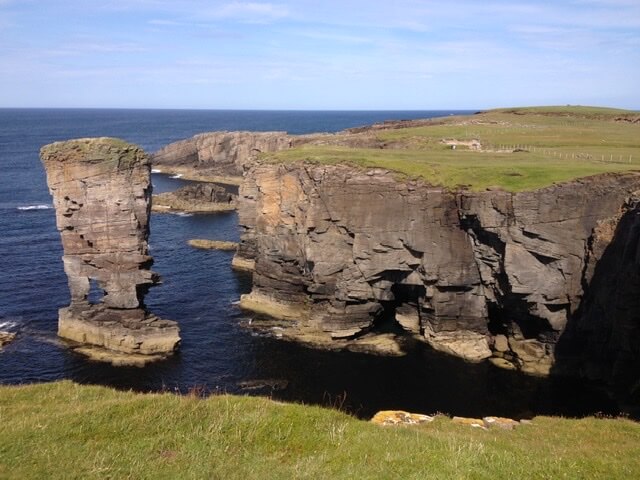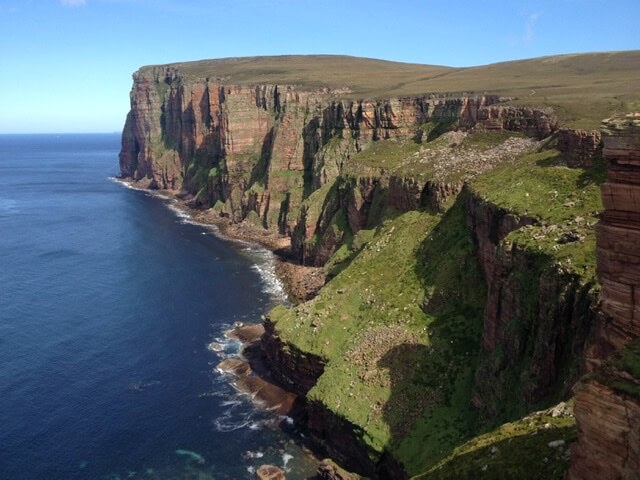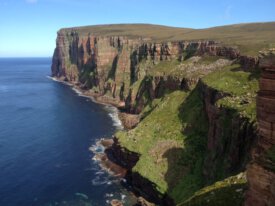 The third week we spend in the Outer Hebrides and Orkneys; groups of islands in northwest and northeast Scotland. What they have in common is that they are barren, rugged islands without trees, with high cliffs and many nature reserves with birds and in the sea many seals. But there are also clear differences. The Hebrews are much less cultivated, very Christian, Gealic background and a bit more desolate.
The third week we spend in the Outer Hebrides and Orkneys; groups of islands in northwest and northeast Scotland. What they have in common is that they are barren, rugged islands without trees, with high cliffs and many nature reserves with birds and in the sea many seals. But there are also clear differences. The Hebrews are much less cultivated, very Christian, Gealic background and a bit more desolate.
The Orkneys are more developed, not at all Christian, Scandinavian background and more accessible. The people on both groups of islands are very friendly. And it is very nice to be able to visit and get to know these areas. Now at the end of the third week we are still in the Orkney's waiting for good weather to sail back home. Ex-Bertha is causing a storm on the North Sea at the moment. We think we can leave on Wednesday August 13th.
The third week from day to day. After the miserable night in which we kept anchor watch and therefore hardly slept, we have a hearty breakfast with a fried egg and bacon. To get ready for the 40 miles to Stornoway, Outer-Hebrides. In the morning the strong north wind has diminished and when we leave around noon there is very little wind. But there are still pretty high waves, we notice when we sail out of the bay. Exactly out of the direction we have to go. Not nice. But other options are not nice either because of these high waves. So let's keep biting. All four of us take a comfortable reclining position so we don't get sick.
With Toine and me this time extra critical because of the bad night. In the end it takes us 7 hours and the first three hours are the most annoying. After that the sea muffles further and further, there is almost no wind, and the last two hours are very quiet with the Buiten-Hebrieden nicely in sight. At 19.00 hours we moor in the new marina of Stornoway. We receive a very friendly welcome. We have eaten very little during the trip and rattle with hunger. On the instructions of the harbour master we end up in a fine restaurant with very good food. Suddenly so much food with wine goes fast at Mira's; just outside in the fresh air helps. We make a good night.
The next day we explore 'Haris' with a rented car. (Especially in Toine's eyes a very small car-;). It is still quite a distance through a very rough landscape. We have lunch in Talbert, drive all the way to the lower point of Haris and make a nice cliff walk on the northwest side of Harris. In the evening on the boat we eat delicious cheese fondue. It is a bit colder and we sit inside. What a lovely space we have there. At the Brandaan we always put up the cockpit tent, on the SeaQuest we crawl inside and close the shutters.
The next day we go out by car again. This time we don't drive as far over Lewis. We visit 'standing stones', a pre-historic village and we make a nice walk on the most northwestern point of the Hebrides. Really at the end of Europe.
We'll take it easy on the last day. Eline and I are going to run and do the hockey exercises. In the afternoon at 2 p.m. we leave for the 110-mile trip to Orkney's. The first part over a calm sea with little wind. Around dinner we see a lot of dolphins around us for over an hour. Two very large dolphins swimming with the boat for a while. And a lot of small dolphins jumping out of the water in the distance.
That's still a beautiful sight. Around 10 p.m. we arrive at Cape Wrath and once around the tip the wind picks up more and more. The rest of the night we only sail with the genoa and the wind right from behind, wind force 5-6. The waves build up reasonably well and push the boat back and forth. No course for a good night's sleep. At 6.30 am we sail through the Hoy Sound into Orkney's and arrive in the town of Stromness. At 7.00 am we are well moored and both of us dive back into bed.
The girls are awake earlier than we are and only go out to get bread. It is beautiful sunny weather and we spend a quiet day on the boat. It is a beautiful marina with next to us a number of boats from Norway, USA and three other Dutch boats. With the crew of one of those boats we did the weather course together five years ago. We want to rent a car but that seems difficult because all rental companies are 'fully booked'. Fortunately, the next morning we manage to get it done at a small rental company nearby.
Again it is beautiful sunny weather and we make a nice trip over 'west-Mainland'. We visit several archaeological interesting places (it's a walhalla for archaeologists here), such as the pre-historic village of Skara Brae, remains of a Norwegian church near Birsay, the beautiful Broch of Gurness and the standing stones of Brodgar. Combined with short walks along the high rocky coasts. Especially Skara Brae is impressive; a very well preserved pre-historic village (3000 BC) because it was only discovered in 1950 when a storm swept away the dunes under which the village was well preserved.
The distances are shorter than on the Hebrews and it is much admired with sheep in meadows with fences instead of running loose like on the Hebrews. And there are many cows where the famous Orkney Beef comes from. We taste that in the evening in a restaurant and it indeed tastes delicious.
The next day the weather is a little less and in the afternoon it rains all the time. But we go out anyway, this time to the east side of the 'Mainland'; a group of islands that are connected by four dams.
The 'Churchill Bariers' that Churchill had built at the beginning of the Second World War to protect the 'Scapa Flow', the area where the British navy lay, from German submarines. Just before that, a German submarine had penetrated and sunk a British ship with over 800 dead. There are more wrecks at the bottom of the Scapa Flow, because also in the 1st W.O. a lot of things happened here, including a German fleet that sunk itself when the war was over and they were captured by the British.
Italian prisoners of war were used to build the dams. For themselves they built a beautiful little chapel full of beautiful paintings. During a short walk along some defensive works from the 2nd W.O. we get wet by the rain. We drive around a bit more, don't get out of the boat anymore, and stop in time to dry on the boat. In the evening we watch two movies. Every day we keep a close eye on the weather to determine when we can sail back home. That's not in the next few days; the remnants of hurricane Bertha cause storms on the North Sea. We could go a bit further now, but then we would have to stop in a much less nice part of Scotland after 24 hours. So we just stay here.
The third day we should have returned the car but the sky is completely blue and this is probably the last beautiful day. Mira drums everyone out of bed in time to catch the ferry to the island of Hoy. And that is a good choice ... Hoy (meaning 'high' in Norwegian) is the highest island with a rugged landscape, the highest cliff of Great Britain and a beautiful freestanding rock called 'The Old Man'. There we make a walk of more than two hours back and forth in the bright sunshine. Afterwards we explore the rest of the island by car and take the ferry back to the 'Mainland' at 16.30 hrs. A nice day which we end with a delicious and cozy dinner in a small family restaurant. And with this we end the third week of our holiday.
